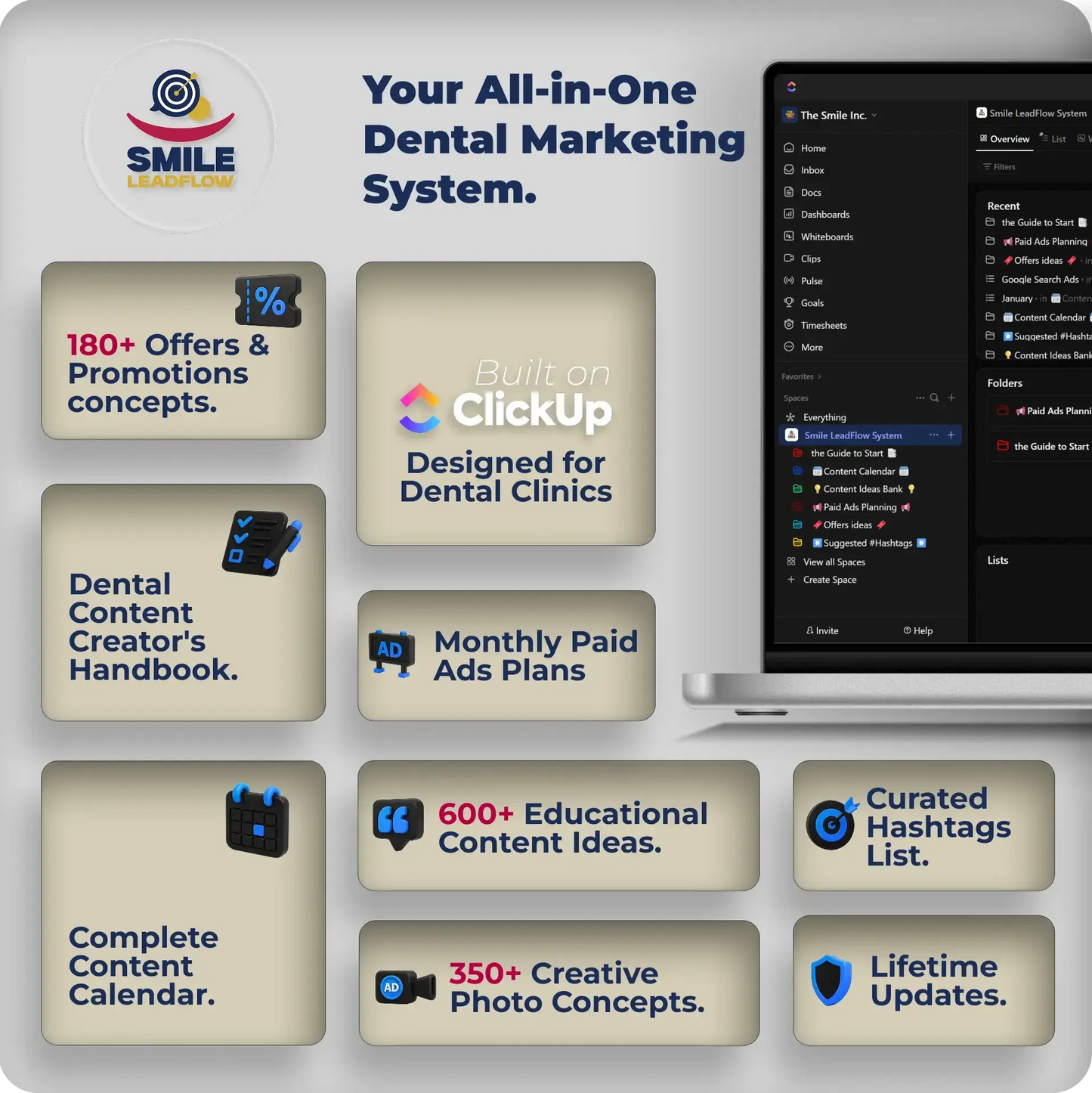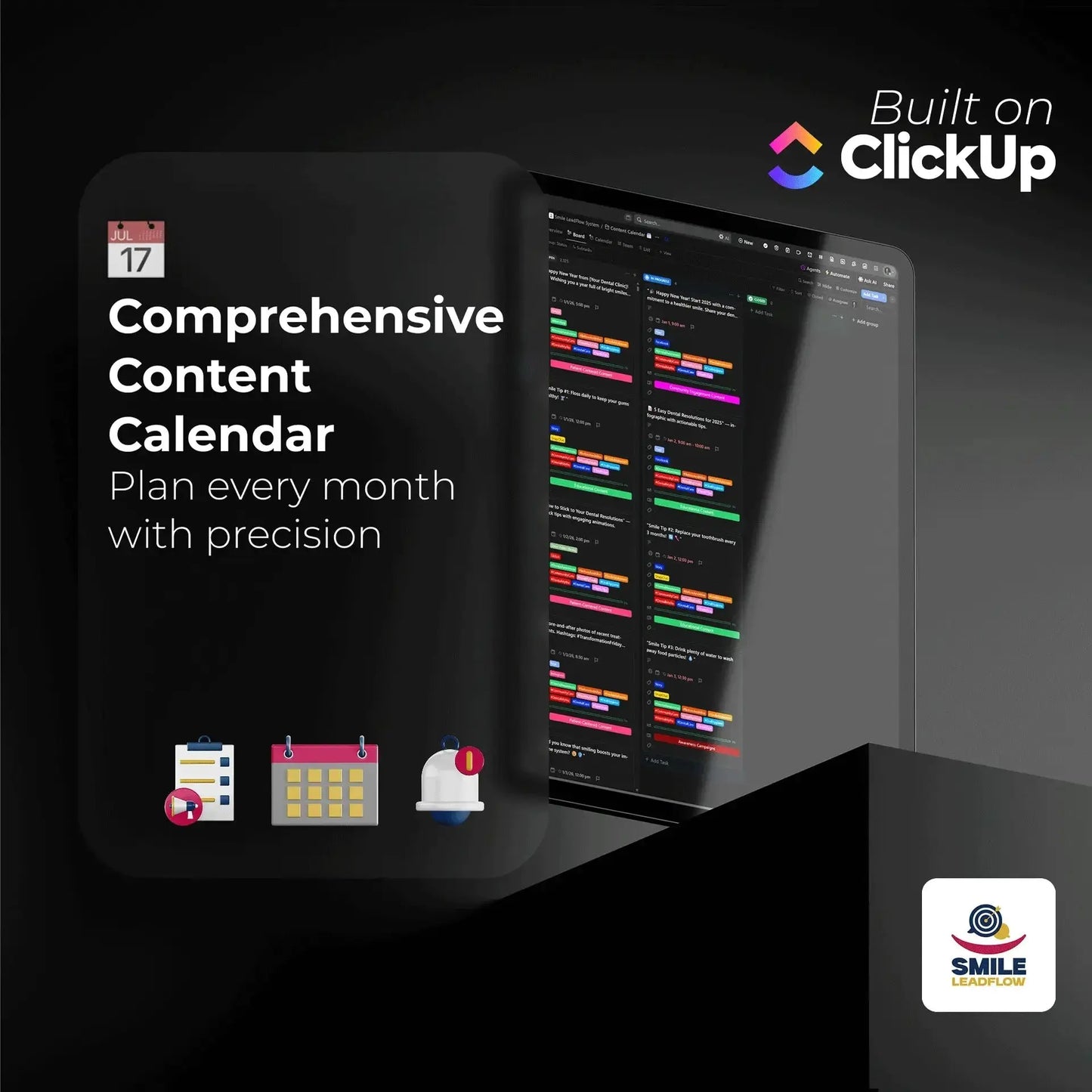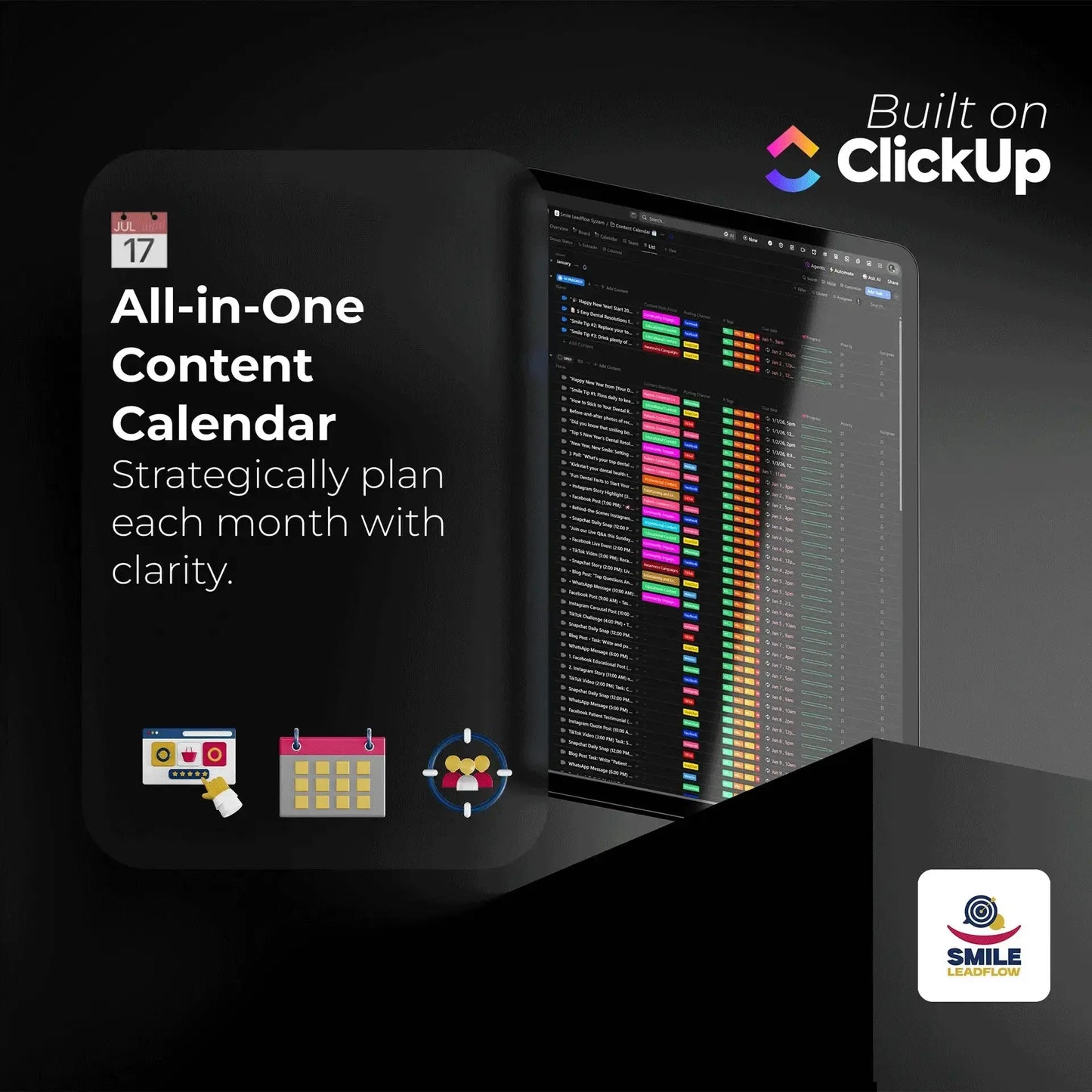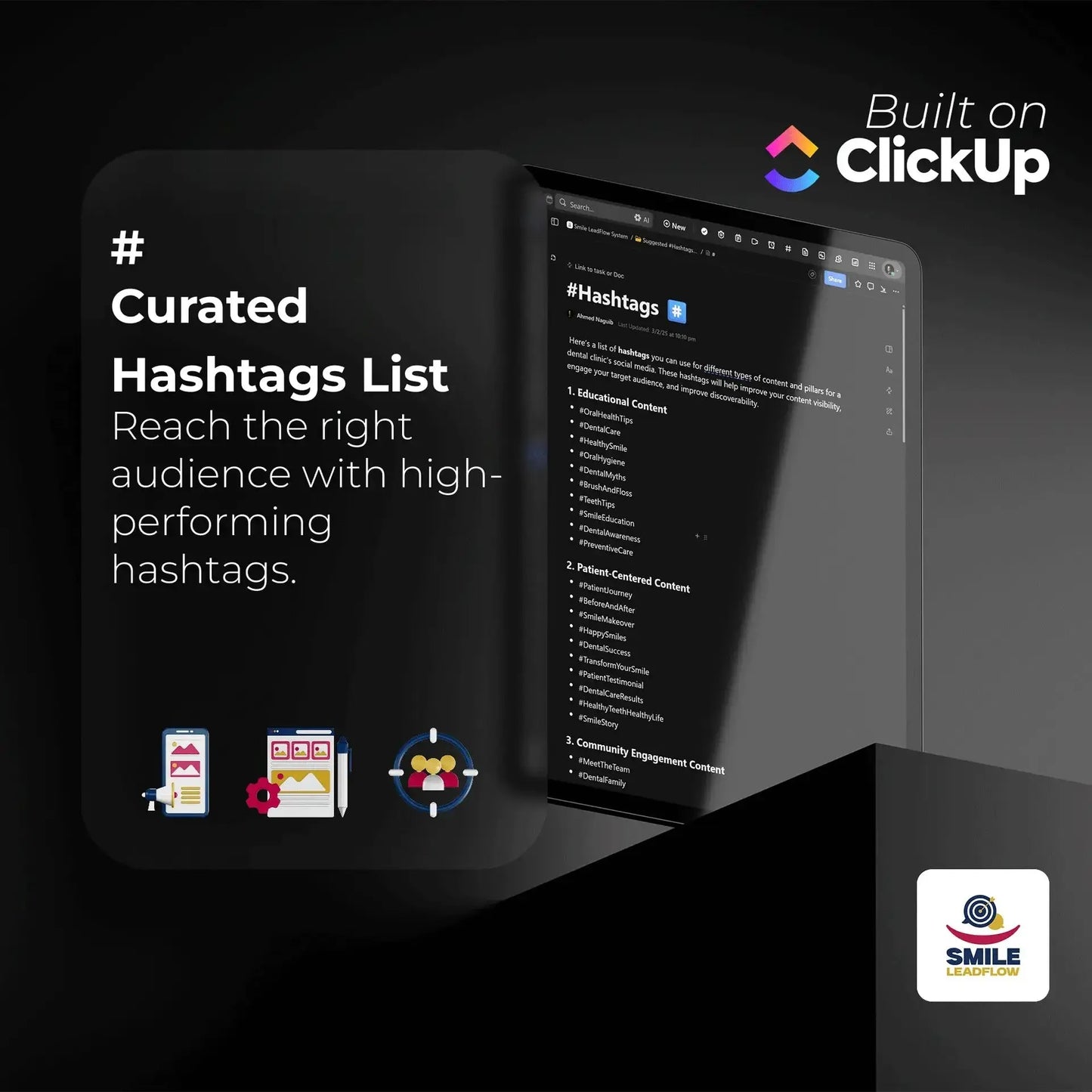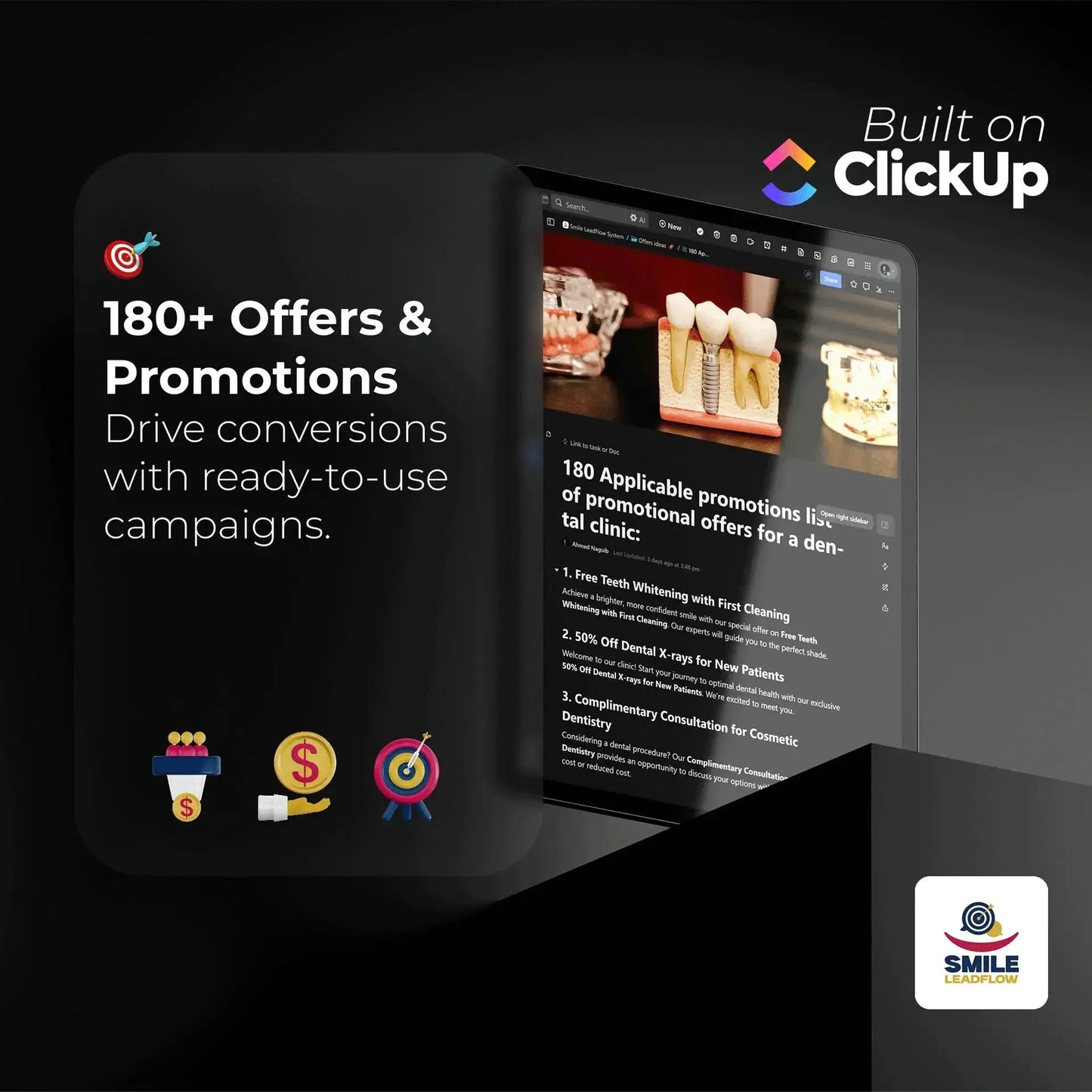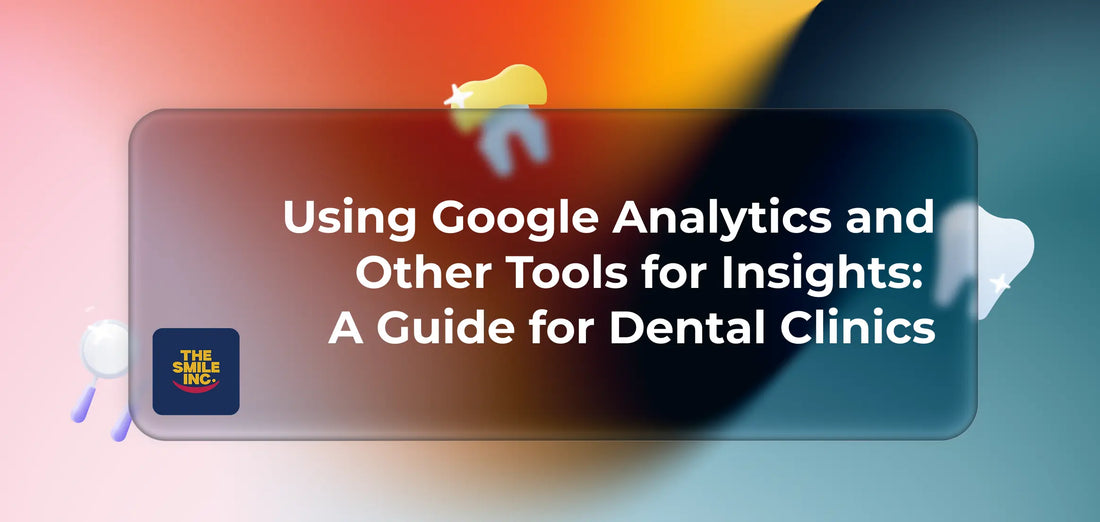
Using Google Analytics and Other Tools for Insights: A Guide for Dental Clinics
Ahmed NaguibShare
Being a dentist is more than a full-time job. You’re a healthcare provider, a business owner, and a pillar of your community. Between perfecting a crown and calming a nervous patient, you’re also expected to be a marketing guru to keep your appointment book full. It’s a constant juggling act, and figuring out how to market your dental practice can feel overwhelming, especially when you’d rather focus on patient care.
What if you could take the guesswork out of your marketing? What if you knew exactly which of your efforts were bringing in new patients and which were falling flat? That’s where data comes in. By understanding a few key metrics, you can make informed decisions that attract a steady stream of patients and drive real growth for your clinic.
This guide will explain marketing analytics essentials in an easy-to-understand manner. No business degree needed, just a passion for effectively and efficiently promoting your dental clinic.
Why Data Is Your Secret Weapon for Dental Clinic Marketing
In the realm of digital marketing, relying on assumptions is akin to filling a cavity without an X-ray—you're operating blindly. Data analytics tools, especially Google Analytics, are your digital X-rays. They give you a clear picture of what’s happening behind the scenes of your website.
Google Analytics is a free and powerful tool that tracks and reports on your website traffic. For your dental practice, it answers crucial questions like
- How are new patients finding my website?
- Which services (like implants, whitening, or cleanings) are people most interested in?
- Are visitors booking appointments, or are they leaving my site too soon?
This information enables you to avoid ineffective ad spending, concentrate on successful strategies, and attract more dental patients to your practice.
Getting Started: Your Simple Guide to Google Analytics
Excited to get started? Here's how to set up and what to keep an eye on.
Step 1: Setting Up Your Account
Setting up Google Analytics is simpler than you might imagine.
- Create an Account: Go to the Google Analytics website and sign up using your clinic's Google account.
- Link to Your Website: You'll get a unique tracking code. This small snippet of code needs to be added to your website (your web developer can do this in minutes!).
- Define Your Goals: For example, if you want patients to request appointments, fill out contact forms, or click on your phone number, create 'goals' to monitor these essential conversions.
Step 2: Key Metrics Every Dentist Should Track

Once you’re set up, you can start monitoring the metrics that truly matter for dental marketing for beginners.
✅ Website Traffic & Traffic Sources
This shows you how many people visit your site and where they come from.
- What to Track: Go to the "Acquisition Overview" report to see your traffic sources.
- Why It Matters: Are people finding you through a Google search (organic search), social media, or a paid ad? Knowing this tells you where to focus your marketing budget. Strong organic search traffic is a great sign for your dentist SEO efforts!
✅ Bounce Rate
This is the percentage of visitors who leave your site after viewing only one page.
- What to Track: Find this under "Behavior" > "Site Content" > "Landing Pages."
- Why It Matters: A high bounce rate might mean your website is slow, the content isn't what visitors expected, or it’s hard to navigate. Improving your dental website SEO by boosting site speed and ensuring your content is helpful can lower this number (Google, 2023).
✅ Conversion Rate
This is the most important metric! It’s the percentage of visitors who complete one of your goals (like booking an appointment).
- What to Track: Monitor your specific goals under the "Conversions" > "Goals" section.
- Why It Matters: Having high traffic is beneficial, but if these visitors don't become patients, your marketing efforts may not yield a return on investment. Focus on making it as easy as possible for visitors to book.
✅ User Behavior Flow
This visual report shows the path visitors take through your website.
- What to Track: Explore the "Behavior Flow" report.
- Why It Matters: You can see exactly where potential patients drop off. For example, if many users visit your "Dental Implants" page but leave without contacting you, that page might need a stronger call to action or a patient testimonial video.
Level Up Your Dental Marketing: Beyond the Basics 🚀
After mastering the basics, you can explore these tools and features for more in-depth insights.
Advanced Google Analytics Features
- Demographics and Interests: Learn the age, gender, and interests of your website visitors to tailor your marketing messages.
- Event Tracking: Track specific clicks on your site, like how many people clicked the "Book Now" button or watched your new patient video.
Complementary Tools for Deeper Insights
While Google Analytics is your foundation, other platforms offer more specialized data. Here are some great local dental marketing tips:
- Google Search Console: This free tool is essential for dentist SEO. It shows you which keywords people are using to find you on Google and helps identify technical issues with your site.
- SEMrush or Ahrefs: These advanced SEO tools help you research what keywords your competitors are ranking for, giving you a competitive edge in your local market.
- Social Media Analytics: Platforms like Facebook and Instagram have built-in analytics to show you how your posts are performing, helping you connect with your community.
- Email Marketing Platforms (e.g., Mailchimp): Track open rates and click-through rates on your newsletters or patient reminders. A/B testing subject lines is a great way to improve engagement (HubSpot, 2023).
Putting Your Data into Action: From Insights to Appointments
Data holds value only when you take action based on it. Here’s how to translate your findings into a busier schedule.
- Optimize Your Website: Identify pages with high traffic but low engagement. Consider adding a video, patient reviews, or a prominent "Request an Appointment" button for better conversion.
- Refine Your Campaigns: If you see that your Facebook ads are driving lots of qualified leads, consider increasing your budget there. If another channel isn't performing, you can scale it back.
- Personalize Patient Communication: Use demographic data to create targeted email campaigns. You might send a promotion for pediatric services to families or information on cosmetic dentistry to young professionals.
Pro-Tip: Avoid These Common Mistakes
- Chasing Vanity Metrics: Page views are nice, but appointment bookings pay the bills. Focus on conversions and ROI, not just traffic (Sullivan, 2022).
- Ignoring Mobile: A significant number of patients look for dentists on their mobile phones. Ensure your website is mobile-friendly and easy to use on a small screen.
- Failing to Act: Don't let your data collect dust! Schedule time each month to review your analytics and make at least one positive change.
Conclusion: Make Data Your Competitive Advantage 🦷
In today’s digital landscape, understanding your marketing data is the key to sustainable growth. Utilizing tools such as Google Analytics allows you to shift from guesswork to a data-driven strategy that consistently draws in new patients and enhances your practice. By analyzing key metrics and refining your approach, you can ensure your clinic not only survives but thrives.
Ready to take control of your marketing and promote your dental clinic with confidence?
CTA: Your first step is simple: Set up Google Analytics on your website today. Establish your goals, monitor crucial metrics, and transform those insights into a thriving practice. You’ve got this!
References
- Google. (2023). Google Analytics. Retrieved from https://analytics.google.com
- HubSpot. (2023). CRM Platform. Retrieved from https://www.hubspot.com
- Sullivan, R. (2022). Marketing Strategies for Small Business: A Practical Guide. Entrepreneur Press.












